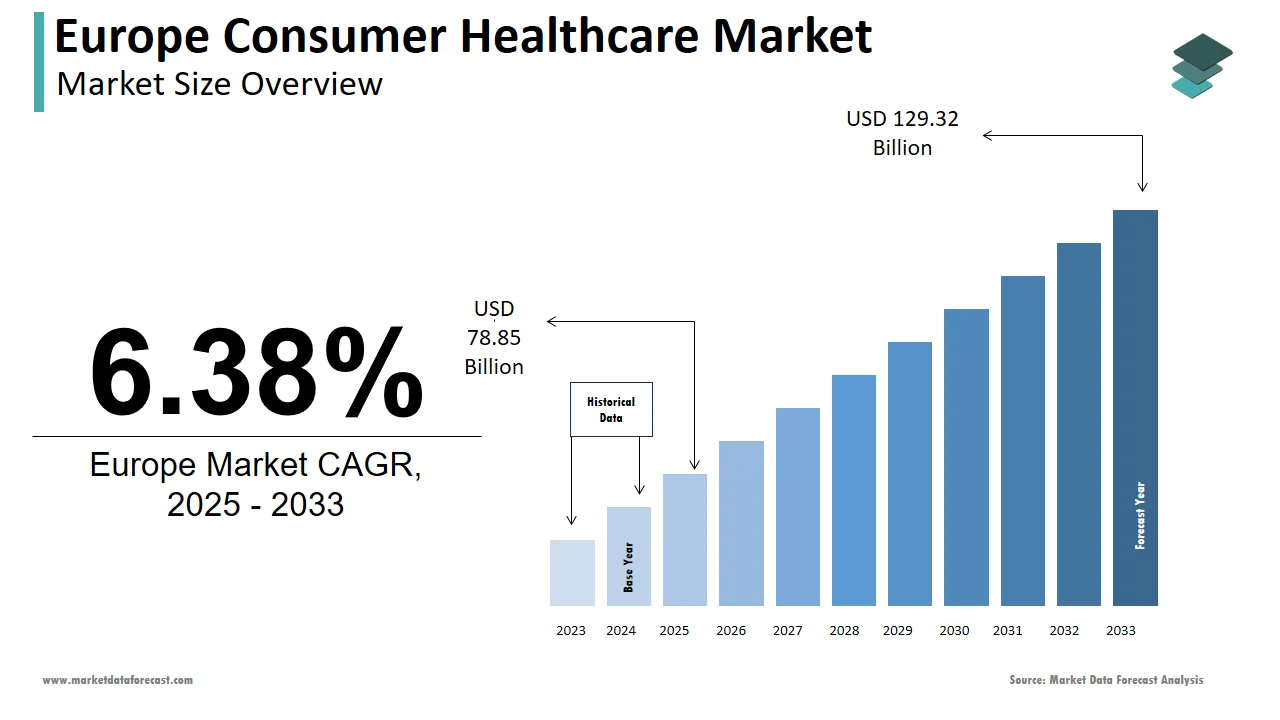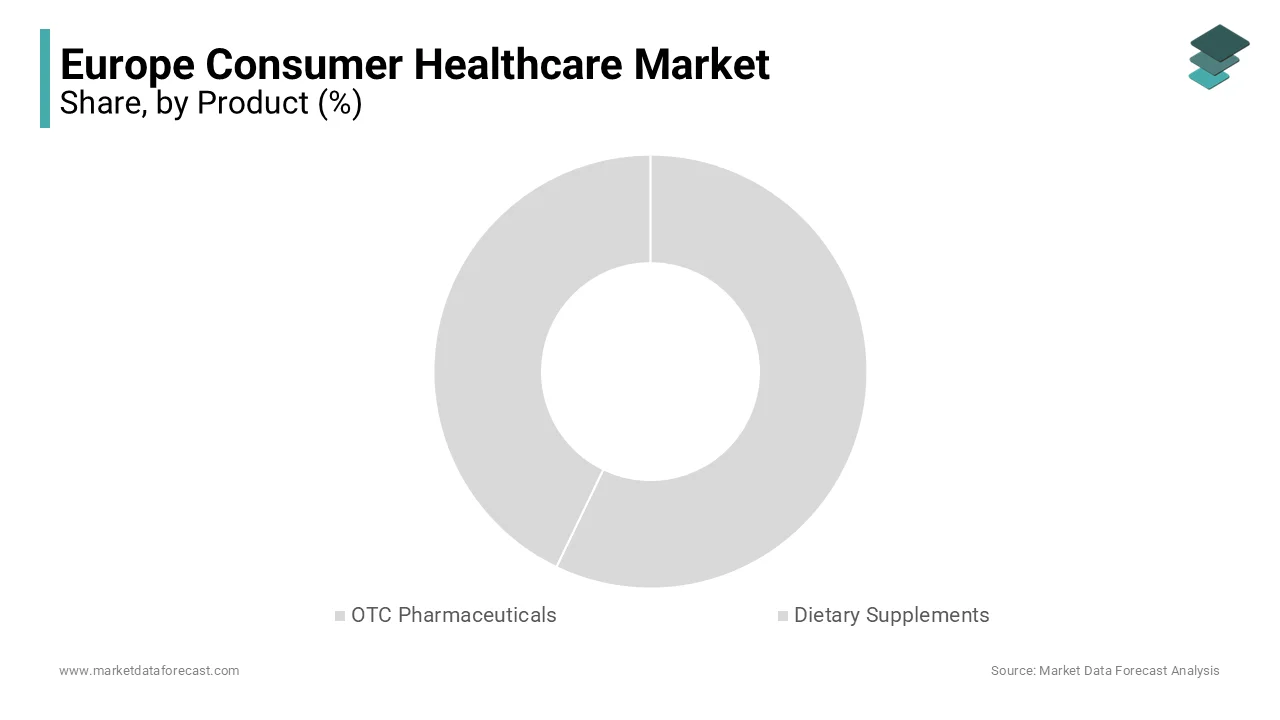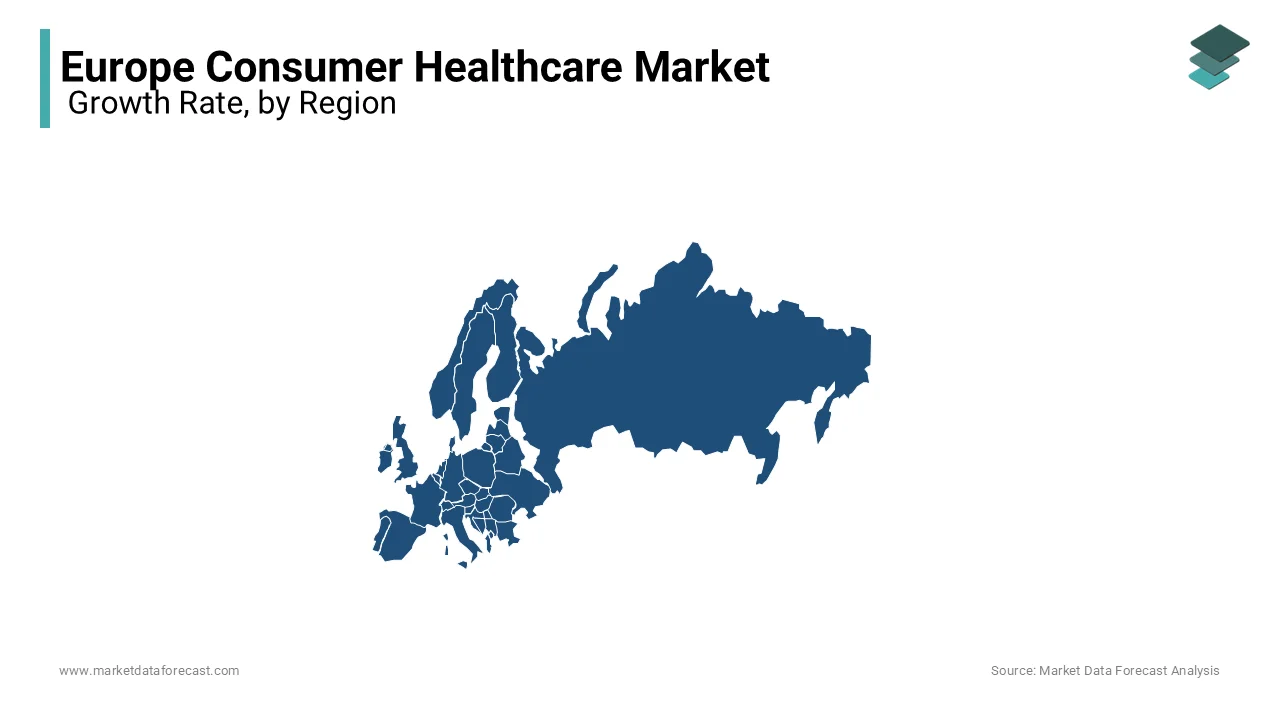Europe Consumer Healthcare Market Size, Share, Trends & Growth Forecast Report By Product, Distribution Network and Country (UK, France, Spain, Germany, Italy, Russia, Sweden, Denmark, Switzerland, Netherlands, Turkey, Czech Republic and Rest of Europe) - Industry Analysis, From (2025 to 2033)
Europe Consumer Healthcare Market Size
The size of the Europe consumer healthcare market was valued at USD 74.12 billion in 2024. This market is expected to grow at a CAGR of 6.38% from 2025 to 2033 and be worth USD 129.32 billion by 2033 from USD 78.85 billion in 2025.
MARKET DRIVERS
Factors such as rising health care costs, high demand for self-medication, a growing geriatric population that is more susceptible to disease, the shift from prescription to over-the-counter products and deteriorating mental health, growing demand for branded products, coupled with the rapid and growing use of online sources, private labels, increase in disposable income and the approval of preventive medicine and welfare drive the Europe consumer healthcare market.
With the increase in self-medication practices, the market for consumer health products will be positive until the end of 2023. Consumer health products do not require a written address from health professionals but can be purchased directly from pharmacies. For example, consumers with mild gastrointestinal health use gastrointestinal medications such as laxatives, antidiarrheal, and digestives. The tradition of self-medication also reduces the pressure on health care and is easily accessible to patients in rural areas.
Therefore, this growing practice of self-medication is expected to positively influence the consumer health market by the end of 2023. Additionally, factors such as the increasing use of online resources and e-commerce websites will help candidates develop in the market until the end of the forecast period. For example, the aforementioned websites such as healthkart.com, vitacost.com, and vivavitamins.com have a wide range of healthy vitamin drinks, protein shakes, and appendages online. In addition, these sites offer interactive live chat meetings to provide instant assistance to those who have difficulty purchasing such products. Therefore, this recent shift towards e-commerce websites and online stores is expected to drive the growth of the European consumer health products market during the projection period.
MARKET RESTARINTS
However, factors such as counterfeit pharmaceuticals, the inconsistent regulatory framework in various economies, strict government regulations for the health sector, and abuse of over-the-counter drugs resulting in addiction and dependence will restrain the market in upcoming years.
SEGMENTAL ANALYSIS
By Product Insights
GEOGRAPHICAL ANALYSIS
Geographically, the German consumer healthcare market is expected to experience significant growth during the forecast period in the European market due to the growing awareness of consumer healthcare products among the region's population. In Europe, Germany and the United Kingdom together represent more than 42% of the market share.
Among the other remaining regions, Ireland, Sweden and Netherlands are expected to experience significant growth over the next few years due to demographic factors such as growing consumer concerns about health and the increasing availability of products in pharmaceutical stores. For example, in Europe, the regulatory aspects related to the sales channel from which a drug can be purchased without a prescription and the presence of the pharmacist during the transaction differ from one country to another. This type of fragmentation often leads to increased costs and affects consumers' access to products.
Other industry-related factors, such as increased manufacturing expertise, emerging local players focused on research and development, and government actions to significantly promote quality healthcare, are expected to contribute favorably to the growth of the European consumer healthcare market.
KEY MARKET PLAYERS
Companies playing a prominent role in the European consumer healthcare market profiled in this report are Johnson & Johnson, Boehringer Ingelheim GmbH, GlaxoSmithKline plc, Amway, Bayer AG, Pfizer Inc., Abbott Laboratories, Sanofi, BASF SE, DSM, American Health, Herbalife, The Himalaya Drug Company, Kellogg, Takeda Pharmaceuticals and Teva Pharmaceuticals.
MARKET SEGMENTATION
This Europe microscopy market research report is segmented and sub-segmented into the following categories.
By Product
-
OTC Pharmaceuticals
-
Dietary Supplements
By Distribution Network
- Departmental Stores
- Independent Retailers
- Pharmacies or Drugstores
- Specialist Retailers
- Supermarkets or Hypermarkets
By Country
- UK
- France
- Spain
- Germany
- Italy
- Russia
- Sweden
- Denmark
- Switzerland
- Netherlands
- Turkey
- Czech Republic
- Rest of Europe
Related Reports
Access the study in MULTIPLE FORMATS
Purchase options starting from $ 2000
Didn’t find what you’re looking for?
TALK TO OUR ANALYST TEAM
Need something within your budget?
NO WORRIES! WE GOT YOU COVERED!
Call us on: +1 888 702 9696 (U.S Toll Free)
Write to us: [email protected]



